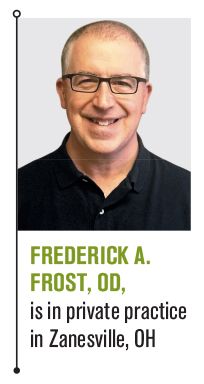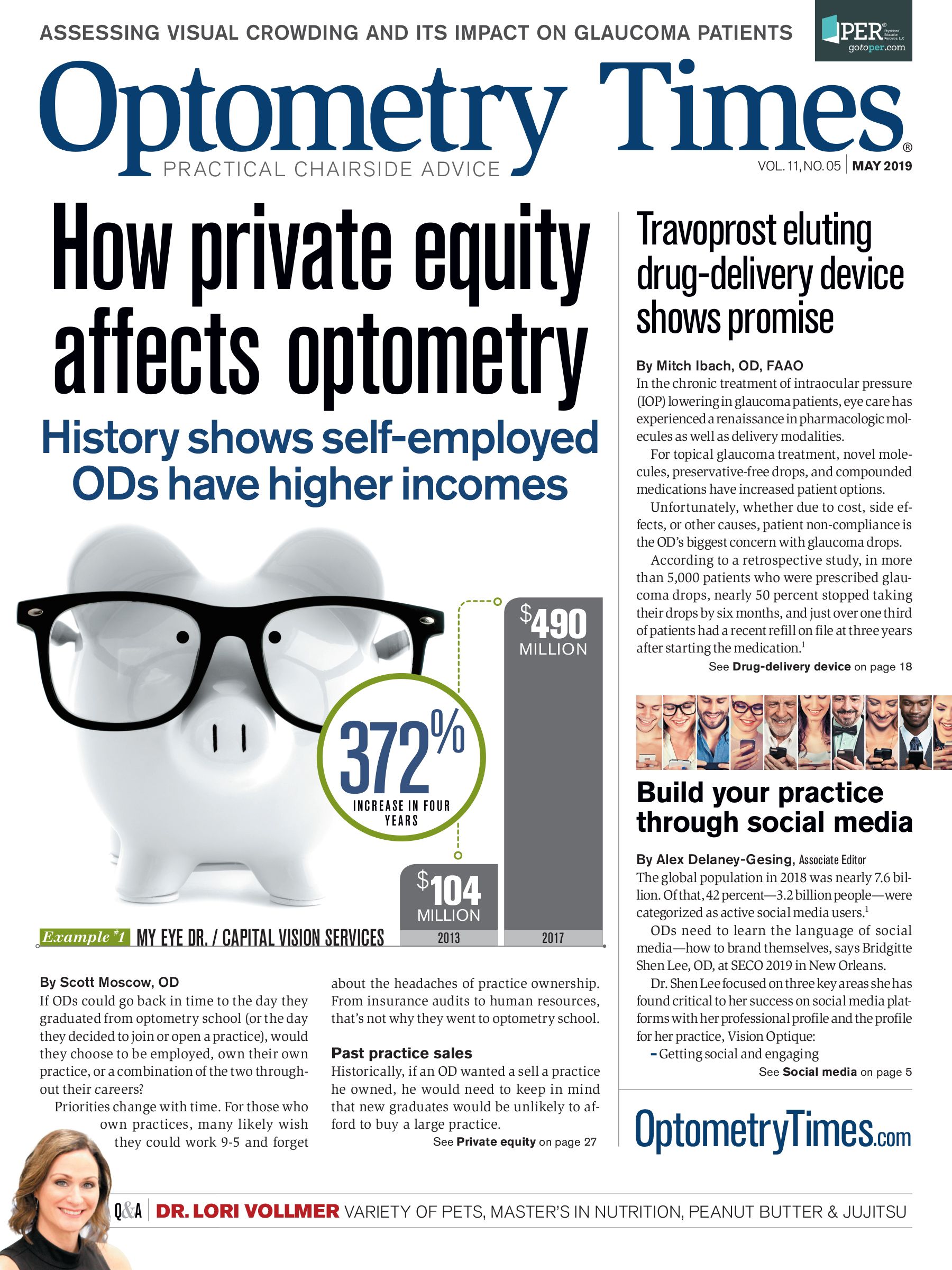How I built a customer service-centered practice


Over the past 14 months, I have made dramatic changes to my private practice that have paid great dividends. Before I talk about those changes, it is important to see where I was before I started.
I had been in private practice for 28 years. While the practice was going fine, we were not growing or slipping-we were stagnant. Our dispensary sales were flat, and our private pay sales were abysmal. It was extremely rare to sell a second pair of glasses under any circumstances.
Our labs provided acceptable service, but we were waiting a week to 10 days to receive our jobs. Many patients were not happy about this. Like everyone, my practice was under attack from online opticals and same-day opticals that could give as good or better service for a lower price.
Related: How to open the optical sale
Rethinking our approach
But then a series of events happened that caused me to rethink the whole basis of my practice.
It started when I learned that LensCrafters, one of the oldest one-hour labs, was getting rid of its in-store labs and moving away from one-hour service. I also heard that Walmart was not doing a lot of same-day service any more.
In fact, it seemed that almost every optical, private or not, was going to centralize lab work in order to save money at the expense of patient convenience.
Because many local labs were moving away from same-day service and into slower service, this gave me an idea where I could differentiate my practice. I was going to do completely the opposite of all of these companies.
I was going to change my practice top to bottom to deliver same-day optical service, and in general, improve all aspects of the customer service we were delivering, both professional and retail.
Related: 6 steps for an optimal optical inventory
Lab services
I started taking a look at my office laboratory. I had an edger, but it had not been used much in years, so I had it serviced. I could now implement in-house finishing which should cut a day or two off of our service.
Next, I decided to stock single-vision lenses. On the advice of a colleague, we stocked one type of single vision lens: single-vision polycarbonate anti-reflective (AR) lenses. This allowed us to provide single-vision prescriptions in as little as 10 minutes to those who wanted them.
This move also gave us the opportunity to provide in-office finishing for patients with vision plans such as VSP, and deliver much faster service than our VSP lab, which generally took two to three weeks.
Next, we wanted to expand our same day service to include flat-tops and progressives with Transitions and AR coating. I found a used lens casting unit for sale by an optometrist. Unfortunately, only her optician knew how to run the unit and she did not want to pay the company to come train her. I was able to buy the $60,000 unit for only $4000.
That should be a lesson to everyone-know how to perform every job in your practice, not just the clinical care.
After getting the units serviced, we could now handle these jobs for much less than we were paying our current laboratory to send us uncuts.
Despite these improvements, we still needed to have a good lab that we could count on to produce those lenses outside of range and handle prism and specialty lenses.
I was fortunate at about the same time to learn of a new laboratory that just opened which was predicated on affordable prices as well as giving the best service. This lab enabled us to obtain uncuts at less than 50 percent of what we were paying and to receive most in one to two days. This meant that we should be able to deliver nearly 100 percent of our prescriptions in at most two days’ time, with the vast majority available the same day.
Related: 5 steps to maximize your optical profit
Optical
Many of the pieces were now starting to fall in place. We had the faster turnaround time we wanted, but we ensured that we had the quality we wanted. By stocking only polycarbonate AR lenses, patients who wanted same-day service had to purchase a premium product. Our cast lenses are quality high-index aspheric lenses. All of my patients were now going to walk out with glasses that I could be proud of.
We then turned to the frames in our dispensary. While we had a variety of frames, we did not have many high-end frames. Again, a good friend suggested that the reason we are not selling more eyewear is because we don’t offer high-end frames that people want. He told me that if I stocked them, people would surprise me and buy them, including my Medicaid patients.
We did not want to set up multiple accounts with new frame manufacturers without knowing what we wanted. So again, on the advice of my colleague, we worked with a company that stocks frames from many high-end manufacturers but sells them in packs below wholesale, enabling us to buy frames and try out different manufacturers without committing to a large purchase. Because this company’s prices were below wholesale, the practice was able to make more money on third-party patients.
Related: Glasses and contact lenses: have they become a commodity?
Pricing
This brings us now to an important point: I had to raise my prices. In an industry in which we hear about opticals giving away eye exams, I realize that if my staff and I want to provide good customer service, we need to make the money to be able to provide what my patients wanted and deliver it to them sooner than expected.
You can not provide excellent customer service at low prices.
Doctor recommendations
Meanwhile, I changed my presentation in the examination room to recommend the best materials and eyewear that are available to all my patients including Medicaid patients.
I informed them that we have our own lab, and their glasses might be ready the same day. I knew this would put us under pressure to deliver-but if you promise, you must deliver.
I wanted my organization to improve to keep its word, which is the most basic tenet of customer service.
Related: Selling glasses online may not be answer for ODs
Better service, happier patients
The result of the changes my practice implemented was that patients were blown away.
Not only were they getting better materials than they had had before, they could not believe the speed of delivery. Getting a product while they waited closed the sale many times.
As an example, we had an employee from Amazon go bonkers when we made his glasses in 10 minutes, then he referred his mother. She came in the same day after canceling her appointment at an optical that used to offer same-day service. This started a chain reaction of referrals and new patients coming into the practice.
We added our same-day service pledge to our website, which we updated with online appointment scheduling and optimized for mobile viewing.
Streamlining our optical, adding online appointments, and providing same-day service freed up staff time. We were able to increase the number of appointments we booked every day by 25 percent, which further improved our bottom line.
Contact lenses
I then turned my attention to the contact lens side of my practice.
It would sometimes take several days to a week to obtain trial lenses and patient supplies, and patients did not appreciate the wait. The result was that many patients took their contact lens prescriptions elsewhere.
Fortunately, our contact lens distributor was bought out by a larger distributor, and we began receiving our contact lenses within 24 hours.
I then found a company that would put a store page on my website to allow my patients to order their contact lenses online 24 hours a day. Patients were able to have the lenses shipped to their homes. We have increased the number of patients who purchase contact lenses from the practice instead of from online contact lens retailers.
Related: Unravel the disconnect of online contact lens sales
Professional offerings
The next step, which I thank many ODs don’t think about, was expanding my professional skills.
I learned how to fit scleral lenses for keratoconus, irregular corneas, and dry eye. I also learned how to fit orthokeratology (ortho-k) lenses and contact lenses for myopia control. We have gained several patients in these specialties who are no longer referred out.
I have discovered that some patients are considering refractive surgery, but they don’t mention it to us until we discuss ortho-k. Patients are excited there is a nonsurgical way to correct their refractive error for about one-third the cost of refractive surgery.
Staff
One area of customer service all ODs could improve is taking good care of staff.
We put in standing desks to ease computer strain, and we added a microwave, refrigerator, and coffee station so they would not have to waste their lunch hours running out for food.
I performed ortho-k on one staff member, and she is ecstatic to be out of glasses for the first time since she was 11 years old.
We want staff to be happy and with the practice long term. Enthusiastic staff is necessary for a practice to deliver the best service, and this aspect is often overlooked.
Related: How staff can help differentiate your practice
Wrapping up
In summary, every decision I made over the past 14 months was about one thing: making it easier and more exciting to do business with my office. The results have been spectacular, with all money invested recovered in the first six months.
Customer service is a great strategy to implement these days because many businesses deliver poor customer service.
An optometric practice focused on customer service charges more, but its patients feel the difference. It takes a lot of work to consistently provide exceptional service, but the results are happier staff, patients, and ODs with the practice now a high-energy, exciting place to work.
Consider upping customer service in your practice.
In his free time, Dr. Frost enjoys inspiring fellow optometrists and spending time with his family. Dr. Frost has no disclosures.
fafrost@gmail.com

Newsletter
Want more insights like this? Subscribe to Optometry Times and get clinical pearls and practice tips delivered straight to your inbox.